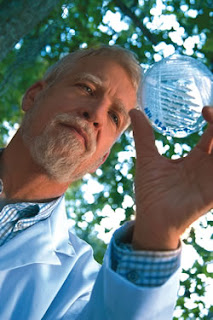
One of the most interesting things I have learned about in the course of studying for the patent bar is the amount to which patents are abused. Today I will share with you two of the most rediculous.
The first is a method for exercising cats using a light source.
You may think its cute to watch your cat run and jump for the light but you are infringing on this person's patent. Click here for a gander at the pdf.
Here are the claims from the patent available from the U.S. Patent and Trademark Office.
Method of exercising a cat
What is claimed is:
1. A method of inducing aerobic exercise in an unrestrained cat comprising the steps of:
(a) directing an intense coherent beam of invisible light produced by a hand-held laser apparatus to produce a bright highly-focused pattern of light at the intersection of the beam and an opaque surface, said pattern being of visual interest to a cat; and
(b) selectively redirecting said beam out of the cat's immediate reach to induce said cat to run and chase said beam and pattern of light around an exercise area.
2. The method of claim 1 wherein said bright pattern of light is small in area relative to a paw of the cat.
3. The method of claim 1 wherein said beam remains invisible between said laser and said opaque surface until impinging on said opaque surface.
4. The method of claim 1 wherein step (b) includes sweeping said beam at an angular speed to cause said pattern to move along said opaque surface at a speed in the range of five to twenty-five feet per second.
Kevin T. Amiss and Martin H. Abbott patented this in 1993, which means we only have to wait 3 more years before we can begin legally exercising our cats.
Trolling Patents
The second is the amount that patents are trolled by people with no expertise but look to exploit the complex system where we provide ownership of ideas. Haliburton decided to fight back and patented the process for trolling patents. Check it out here. Thankfully, they have promised to only use their super powers for good.
The inventor and the assignee of this patent have no intention of applying the techniques described herein offensively but instead intend to use the patent defensively to discourage patent trolls and the like from extortionist practices.
Blogging and Disclosure
I have been scarred to post about my coolest science thoughts because it will either start a patent clock or cause me to get scooped, neither of which sound particularly good. Thus proving that in science as in marriage one usually has more to gain from keeping your mouth shut than opening it.
As I study for the upcoming patent bar, I am awed by the seriousness of it all. Though it was not my intention when I began this journey, at the end of next month people could begin coming to me with their hair-brained ideas and request that I patent them, for a reasonable fee. Sure, most patents don't bring money to your bank, but it is quite humbling to think about how easy it is to thoughtlessly destroy someones dreams by forgetting something in the patent application.
After much thought and consideration, I will leave discussions of my scientific ideas to lab notebooks and co-inventors and instead place the spotlight on other scientists who have done some really cool stuff.
Stay on the lookout for articles on exciting new work by Craig Venter and Steven Benner, two of my favorite scientists.






